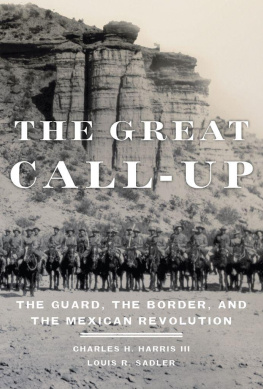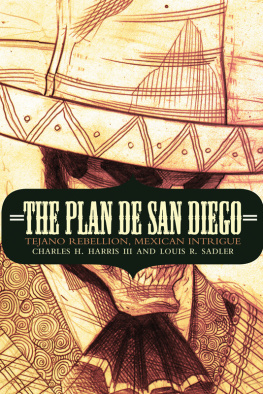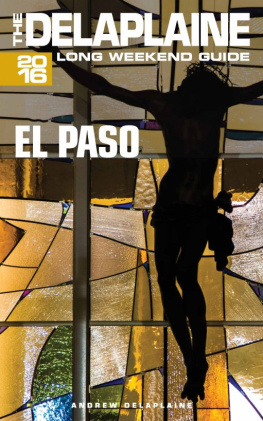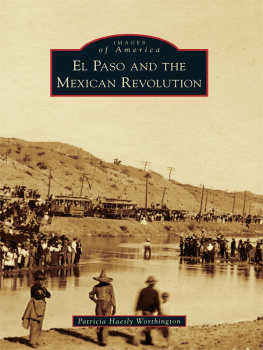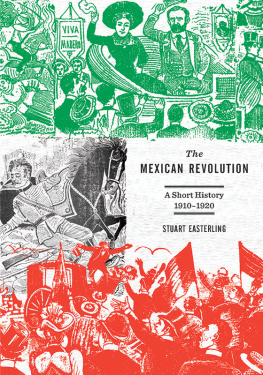The Secret War in El PasoResidents of El Paso perch on rail cars in the city railroad yards observing the fighting in Ciudad Juarez in early May 1911. Walter Horne photo courtesy of the El Paso County Historical Society.
The Secret War in
Mexican Revolutionary Intrigue, 19061920
Charles H. Harris III
Louis R. Sadler
ISBN for this digital edition: 978-0-8263-4654-4
2009 by Charles H. Harris III and Louis R. Sadler
All rights reserved. Published 2009
Printed in the United States of America
161514131211100912 345678
The Library of Congress has cataloged the printed edition as follows:
Harris, Charles H. (Charles Houston)
The secret war in El Paso : Mexican revolutionary intrigue, 19061920 / Charles H. Harris III, Louis R. Sadler.
p. cm.
Includes bibliographical references and index.
ISBN 978-0-8263-4652-0 (hardcover : alk. paper)
1. MexicoHistoryRevolution, 19101920Diplomatic history.
2. United StatesForeign relationsMexico.
3. MexicoForeign relationsUnited States.
4. El Paso (Tex.)History20th century.
5. Mexican-American Border RegionHistory20th century.
6. Mexican-American Border RegionCommerceHistory20th century.
7. SmugglingMexican-American Border RegionHistory20th century.
I. Sadler, Louis R. II. Title.
F1234.H283 2009
972.0816dc22
2009002203
Design and composition by Mina Yamashita.
For Betty and Betty
Contents
Preface
The Mexican Revolution (191020), the first great revolution of the twentieth century, could not have succeeded without the United States. The revolution was primarily a northern movement, the only first-rank figure from southern Mexico being Emiliano Zapata. All the other leading revolutionary personages, including the ultimate winner, General Alvaro Obregn, came from the northern tier of states, and the dominance of the northerners resulted from their access to the American border. Without American territory to serve as a base of operations, a source of munitions, money, and volunteers, a refuge, an arena for propaganda, and a market for revolutionary loot, the Mexican Revolution simply would not have succeeded.
The revolution unfolded under the specter of American military intervention, and in 1914 and 1916 that specter became real. But even when the United States did not overtly intervene, it shaped the course of the revolution by supporting one faction over another, primarily by extending or withholding diplomatic recognition, by imposing or lifting arms embargos, and by selectively applying the neutrality laws. These statutes, which not only prohibited Americans from enlisting under a foreign flag but more importantly prohibited the use of American territory for the purpose of overthrowing a friendly government, were the major tools the United States used to influence revolutionary activity within its borders.
Despite the crucial role of revolutionary intrigues in the United States, this aspect of the revolution hasnt received systematic scholarly study. W. Dirk Raats investigation of Mexican exiles focuses primarily on the magonistas, the followers of the anarchist Ricardo Flores Magn.none is based on the one indispensable archivethe records of the Federal Bureau of Investigation.
Contrary to popular belief, the FBI wasnt created in 1935, and it performed distinguished service even before the advent of J. Edgar Hoover. The agency was formed in 1908 and in 1909 was formally named the Bureau of Investigation. Its name was changed in 1935 to the Federal Bureau of Investigation. They are roughly chronological, but a page or pages of a report may be in one roll while the rest are scattered through several other rolls.
The FBI records afford the historian almost a day-by-day picture of revolutionary intrigue in places such as New York City, Washington, D.C., New Orleans, San Antonio, El Paso, and Los Angeles, among others. Enhancing the picture are the hundreds of federal court cases and U.S. commissioners files that include useful testimony and exhibits. And complementing these American sources are the archives of the Mexican Foreign Ministry. We chose El Paso for the present work because it was by far the largest and most important city on the Mexican border and because the revolutionary machinations that occurred there exceeded in degree, though not necessarily in kind, what occurred elsewhere along the border.
We have titled this monograph The Secret War in El Paso because for over a decade, El Paso was the base of operations for constant intrigue involving U.S. and Mexican authorities, Mexican revolutionists, and others. The population of El Paso was only sporadically aware of this struggle, usually when some incident got into the newspapers. But in this secret war it was often difficult for the players to keep secrets secret from each other. Heretofore no work has focused on this struggle. The revolution also became big business, and some of the citys most respectable citizens were quite profitably involved. And it was the Mexican Revolution that produced a huge military buildup in El Paso and transformed it permanently into the army town that it is today. What we are concerned with is not the ideology of the revolution, which has been discussed ad infinitum, but rather the mechanics of rebellion. The picture that emerges is one in which treachery was elevated to an art form and factional loyalty was fragile. El Paso as a case study indicates what could be done if an examination of revolutionary intrigue on a nationwide basis for the entire decade were undertaken. Such a study would add an important new dimension to what is known about the Mexican Revolution.
Acknowledgments
As a general rule authors have only a vague recollection as to precisely when they conceived the idea of a topic for a possible book. Such is not the case for The Secret War in El Paso. We actually sat down almost thirty-nine years ago and wrote a Memorandum of Understanding laying out the subject of the monograph. To be sure, it was slightly different or, put another way, more focusedon gunrunning in El Paso during the Mexican Revolution. We immediately began doing researchcollecting documents on the topic, and so forth, but a variety of events intervened over decades, which prevented us from completing a book-length manuscript.
We did carry out some scholarship on the topic. For example, we wrote an article (The Underside of the Mexican Revolution: El Paso, 1912, which appeared in The Americas: A Quarterly Review of Inter-American Cultural History) in 1982, and in 1993 a history of Fort Bliss (Bastion on the Border: Fort Bliss, 18541943) for the U.S. Army. We would like to think this historical monograph benefited from the long gestation period.


